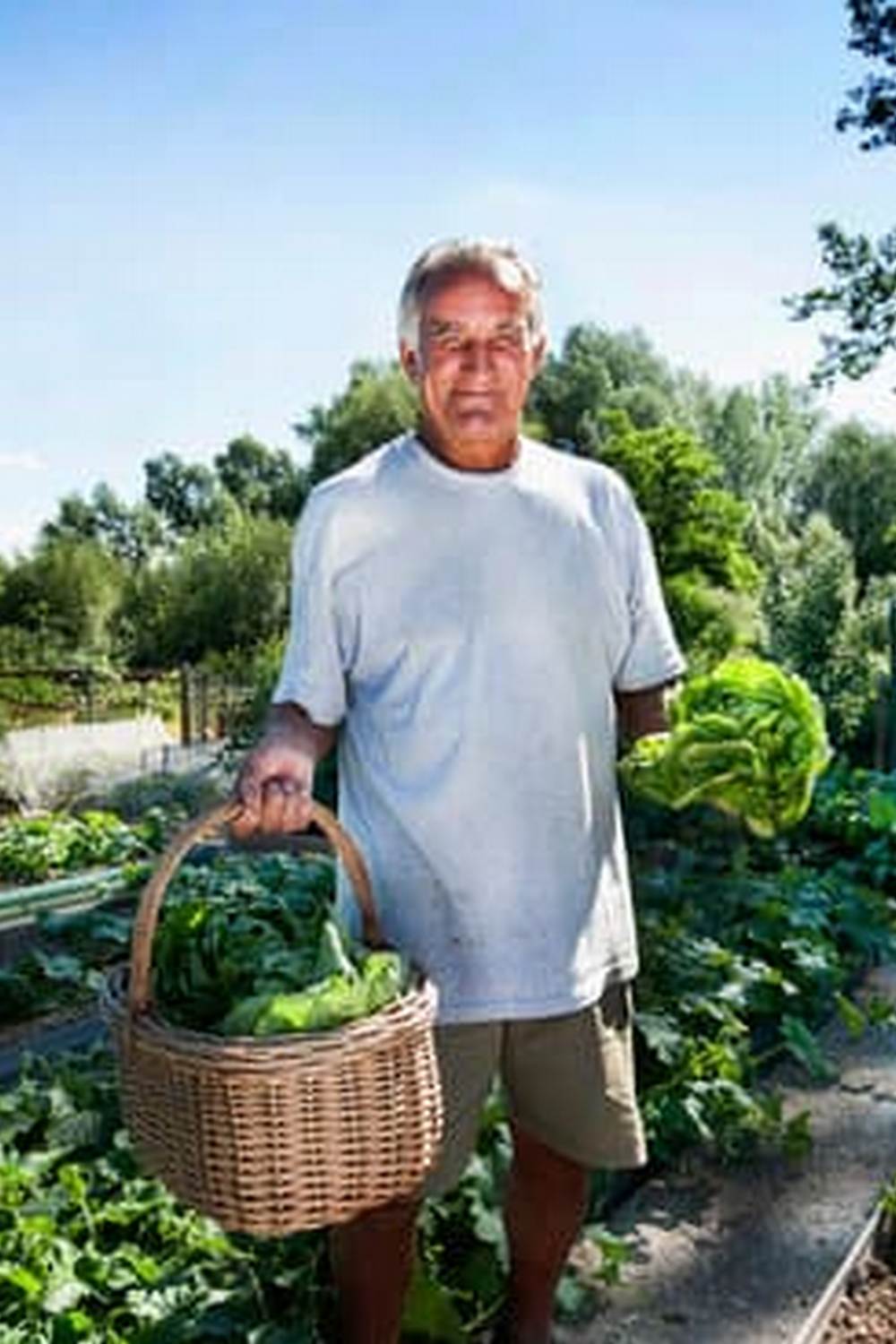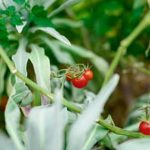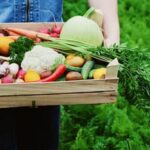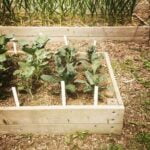As the temperatures start to cool down, it’s time to start thinking about fall vegetable gardening in Austin. With the right preparation and care, you can enjoy a bountiful harvest of delicious, fresh vegetables even as the seasons change. Whether you’re a seasoned gardener or just starting out, there are plenty of opportunities to grow your favorite crops during the fall season in Austin.
When it comes to fall vegetable gardening in Austin, there are several factors to consider, from choosing the best vegetables to plant to preparing the soil and dealing with the city’s unique fall weather patterns. In this article, we will explore everything you need to know about getting started with fall vegetable gardening in Austin, including tips for success and community resources that can help you along the way.
From deciding which vegetables to plant and when to plant them, to managing pests and diseases that are common during the fall season, this guide will walk you through each step of the process. By the end of this article, you’ll be ready and excited to embrace fall vegetable gardening in Austin and enjoy a vibrant harvest of homegrown produce. So grab your gardening gloves and let’s get started.
Best Vegetables to Plant in Austin for Fall
When it comes to fall vegetable gardening in Austin, there are several vegetables that thrive in the cooler temperatures and milder climate of the region. These vegetables not only withstand the seasonal changes but also produce a bountiful harvest for a sustainable and fulfilling gardening experience.
Some of the best vegetables to plant in Austin for fall include broccoli, cauliflower, kale, spinach, carrots, radishes, turnips, and lettuce. These vegetables are well-suited for the autumn conditions in Austin and can be easily incorporated into various recipes for a fresh and healthy culinary experience.
Broccoli and cauliflower are excellent choices for fall planting in Austin as they can withstand light frosts. Their large heads and vibrant colors make them an attractive addition to any garden. Kale is another hardy option that thrives in cool temperatures, providing an abundant harvest of nutrient-rich greens throughout the fall season. Additionally, spinach is a versatile leafy green that can be harvested multiple times during the cooler months, making it a valuable addition to any fall garden.
Carrots, radishes, and turnips are root vegetables that do well when planted in Austin for fall. Their earthy flavors add depth to autumn dishes, and their relatively low maintenance makes them ideal for beginner gardeners.
Lettuce is a popular choice for fall planting as well, with its ability to tolerate cooler temperatures while providing crisp leaves for salads and sandwiches. By choosing these vegetables for your fall garden in Austin, you can enjoy a diverse range of fresh produce throughout the season.
In order to have a successful fall vegetable gardening experience in Austin, it’s essential to properly prepare the soil before planting your chosen crops. The next section will discuss tips for preparing the soil for fall vegetable gardening in Austin.
Tips for Preparing the Soil for Fall Vegetable Gardening
When it comes to fall vegetable gardening in Austin, one of the most important steps you can take to ensure a successful harvest is to properly prepare your soil. The soil in Central Texas can be quite challenging, so taking the time to prepare it correctly will make all the difference in the health and yield of your fall vegetables.
Test Your Soil
Before you start preparing your soil for fall planting, it’s a good idea to test its pH levels and nutrient content. You can find DIY soil test kits at local garden centers or have your soil professionally tested through the Texas A&M AgriLife Extension Service. Understanding the condition of your soil will help you determine what amendments are needed for optimal plant growth.
Add Organic Matter
One of the best ways to improve the structure and fertility of Austin’s clay-heavy soil is by adding organic matter. Compost, well-rotted manure, and leaf mold are great options for increasing organic matter in the soil. Incorporating these materials into your garden beds will help improve drainage, water retention, and overall nutrient availability for your fall vegetables.
Till and Amend
Once you’ve added organic matter, it’s time to till and amend the soil. Use a garden fork or tiller to mix in compost, manure, or other organic materials thoroughly. Additionally, consider adding in any necessary fertilizers or micronutrients based on your soil test results. This step will create a healthy growing environment for your fall vegetable crops.
By taking these steps to prepare your soil for fall vegetable gardening in Austin, you’ll set yourself up for a bountiful harvest of delicious homegrown produce. Remember that proper soil preparation is an ongoing process that will benefit not only this season’s crops but also future ones as well.
Recommended Planting Schedule for Fall Vegetables in Austin
When it comes to fall vegetable gardening in Austin, timing is essential for a successful harvest. The unique climate of Austin requires a specific planting schedule for fall vegetables to thrive. Here are some recommended planting dates for popular fall vegetables in Austin:
- September: Plant beets, carrots, lettuce, radishes, and spinach. These cool-season vegetables can handle the lingering summer heat and will establish well before the first frost.
- October: This is the ideal time to plant broccoli, Brussels sprouts, cabbage, cauliflower, kale, and Swiss chard. These vegetables prefer cooler temperatures and will flourish as the weather begins to cool down.
- November: Consider planting garlic and onions in November. These root vegetables benefit from the mild winter climate in Austin and will be ready for harvest in late spring or early summer.
It’s important to remember that these planting dates are approximate and may vary depending on the specific microclimate of your garden. Being aware of local weather patterns and adjusting your planting schedule accordingly is crucial for a successful fall vegetable garden in Austin.
Additionally, succession planting can be beneficial for extending your harvest throughout the fall season. By staggering plantings of certain vegetables at two-week intervals, you can ensure a continuous supply of fresh produce well into the autumn months. Keep an eye on your local frost dates to maximize your fall vegetable gardening efforts in Austin.
Dealing With Austin’s Fall Weather in Vegetable Gardening
Understanding Austin’s Fall Weather
Austin’s fall weather can be unpredictable, with temperature fluctuations and the occasional thunderstorm. It’s important to keep an eye on the weather forecast and plan your gardening activities accordingly. Be prepared for both warm, sunny days and cooler, rainy ones.
Protecting Your Fall Garden
To deal with Austin’s variable fall weather, consider using row covers or shade cloth to protect your plants from intense sun and heat. These materials can also offer some protection from heavy rain and wind. Additionally, mulching your garden beds can help regulate soil temperature and moisture levels, providing a buffer against extreme weather conditions.
Watering Strategies for Fall Vegetable Gardening in Austin
In Austin’s fall weather, it’s important to adjust your watering schedule according to the changing conditions. During dry spells, be sure to water deeply and consistently to support healthy root development. When heavy rains are in the forecast, monitor your garden closely to prevent waterlogged soil. Consider adding a rain gauge to help you keep track of how much moisture your garden is receiving.
As you navigate through the unique challenges of Austin’s fall weather, remember that flexibility is key in successful fall vegetable gardening in this region. By staying attentive to the forecast and implementing appropriate protective measures for your plants, you can optimize the growing conditions for a bountiful harvest of delicious fall vegetables.
Pest and Disease Management for Fall Vegetables in Austin
When it comes to fall vegetable gardening in Austin, one of the key challenges that gardeners face is managing pests and diseases. However, with the right strategies and practices in place, it is possible to protect your fall vegetables from common threats and ensure a bountiful harvest.
Here are some tips for effectively managing pests and diseases in your fall vegetable garden in Austin:
- Choose disease-resistant varieties: When planning your fall vegetable garden, opt for varieties that are known for their resistance to common diseases prevalent in the Austin area. For example, choose powdery mildew-resistant squash or cucumber varieties.
- Monitor regularly: Keep a close eye on your plants for any signs of pest infestations or disease symptoms. Early detection can make a huge difference in preventing the spread of pests and diseases.
- Practice crop rotation: Rotate your vegetable crops each season to prevent the buildup of soil-borne diseases. This practice can help disrupt the life cycle of pests and pathogens, reducing their impact on your fall vegetables.
Additionally, there are organic methods that can be employed to manage pests and diseases without resorting to chemical treatments. Utilizing natural predators like ladybugs and lacewings, as well as implementing companion planting techniques can also help deter pests and promote a healthy garden ecosystem.
By incorporating these pest and disease management practices into your fall vegetable gardening efforts in Austin, you can increase the likelihood of a successful harvest while minimizing the impact of common threats to your plants. With proper care and attention, you can enjoy an abundance of fresh, homegrown produce throughout the fall season.
Harvesting and Enjoying Fall Vegetables in Austin
When it comes to fall vegetable gardening in Austin, the joy of harvesting your own fresh produce is one of the most rewarding parts of the process. There’s nothing quite like picking your own ripe tomatoes, crisp lettuce, or colorful bell peppers straight from your garden.
In Austin, some of the best vegetables to harvest in the fall include carrots, broccoli, kale, and radishes. These cool-weather crops thrive in the autumn temperatures of Central Texas and can provide a bountiful harvest for you to enjoy.
In addition to harvesting your fall vegetables at the peak of their ripeness, it’s important to store and enjoy them properly. Many fall vegetables such as carrots, potatoes, and onions can be stored in a cool, dry place for weeks or even months after harvesting. This allows you to continue enjoying the fruits of your labor throughout the fall and into the winter months.
Additionally, finding new ways to incorporate your freshly harvested vegetables into your meals can be a fun and creative experience. From hearty stews and soups to fresh salads and side dishes, there are endless possibilities for enjoying the flavors of your fall harvest.
Finally, sharing your bounty with friends, family, or neighbors can be a wonderful way to spread the joy of fall vegetable gardening in Austin. Whether you give away surplus produce or host a gathering featuring dishes made from your garden’s harvest, sharing the fruits (and vegetables) of your labor can create meaningful connections within your community.
| Fall Vegetables | Harvesting Time |
|---|---|
| Carrots | 60-80 days after planting |
| Kale | 50-70 days after planting |
| Radishes | 20-30 days after planting |
Community Resources and Events for Fall Vegetable Gardening in Austin
Fall vegetable gardening in Austin can be a rewarding and enjoyable experience, especially when you have access to community resources and events that can help support your efforts. Whether you’re a seasoned gardener or just starting out, there are many opportunities to learn, connect with others, and access valuable resources to enhance your fall vegetable gardening experience in Austin.
One valuable resource for fall vegetable gardening in Austin is the local community gardens. These communal spaces provide opportunities for individuals to cultivate their own plots of land and learn from experienced gardeners. Many community gardens also offer workshops, events, and volunteer opportunities that can enrich your gardening knowledge and skills.
In addition to community gardens, there are often events and classes hosted by local nurseries, botanical gardens, and agricultural extension offices that cater specifically to fall vegetable gardening in Austin. These events may cover topics such as plant selection, soil preparation, pest management, and harvesting techniques. Attending these events can provide valuable insights and guidance from experts in the field.
Furthermore, online forums and social media groups dedicated to gardening in the Austin area can offer a wealth of information on fall vegetable gardening. Engaging with these communities can allow you to connect with other gardeners, exchange tips and advice, and stay informed about upcoming events and resources relevant to fall vegetable gardening in Austin.
Lastly, participating in farmers’ markets or produce exchanges can be a great way to network with local growers and enthusiasts who share an interest in fall vegetable gardening. Not only can you find fresh produce to enjoy, but you may also discover new varieties of vegetables or gain inspiration for your own garden through these connections.
| Community Resources | Events |
|---|---|
| Local Community Gardens | Workshops at Local Nurseries |
| Agricultural Extension Offices | Classes at Botanical Gardens |
| Online Gardening Forums | Farmers’ Markets/Produce Exchanges |
Conclusion
As the temperature cools and the days grow shorter, fall vegetable gardening in Austin provides a wonderful opportunity to continue enjoying fresh, homegrown produce. By following the recommended planting schedule for fall vegetables in Austin and preparing the soil properly, gardeners can look forward to a bountiful harvest. Embracing fall vegetable gardening in Austin not only allows for tasty and nutritious additions to meals but also provides a satisfying and rewarding experience for both novice and seasoned gardeners alike.
With a wide variety of best vegetables to plant in Austin for fall, including kale, spinach, carrots, and beets, there is no shortage of options for creating a vibrant and diverse autumn garden. The city’s rich community resources and events further support this endeavor by providing valuable knowledge sharing opportunities and access to locally adapted seeds and plants.
Ultimately, engaging in fall vegetable gardening in Austin fosters a sense of connection with nature, promotes sustainable living practices, and encourages healthy eating habits.
In managing pest and disease issues that may arise when cultivating fall vegetables in Austin due to fluctuating weather conditions, it is important for gardeners to remain proactive and vigilant. Through integrated pest management techniques and proper disease prevention measures, such as crop rotation and good watering practices, home gardeners can minimize potential risks.
As gardens begin to yield their crops during the fall season, there is much joy to be found in harvesting and enjoying the fruits of labor – from hearty soups featuring freshly picked vegetables to colorful salads bursting with flavor. Embracing fall vegetable gardening in Austin truly allows individuals to savor all that the season has to offer while reaping the numerous rewards of their efforts.
Frequently Asked Questions
When Should I Start My Fall Vegetable Garden?
The timing of starting a fall vegetable garden depends on the climate in your area. In general, it’s best to start planting about 10-12 weeks before the first expected frost. This gives your vegetables enough time to mature before the cold sets in.
What Can I Plant in August in Texas?
In August, Texas gardeners can plant heat-tolerant vegetables such as okra, southern peas, sweet potatoes, and winter squash. These crops thrive in the hot summer temperatures and will be ready for harvest in the fall.
What Can I Plant in Pots in September in Texas?
In September, Texas gardeners can plant various vegetables in pots, including lettuce, spinach, kale, radishes, and herbs like cilantro and parsley. Potted plants offer flexibility and can be moved around to find the best sun exposure as the seasons change.

If you’re looking to get into vegetable gardening, or are just looking for some tips on how to make your current garden better, then you’ve come to the right place! My name is Ethel and I have been gardening for years. In this blog, I’m going to share with you some of my best tips on how to create a successful vegetable garden.





